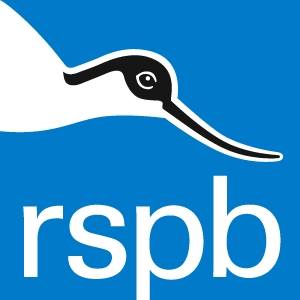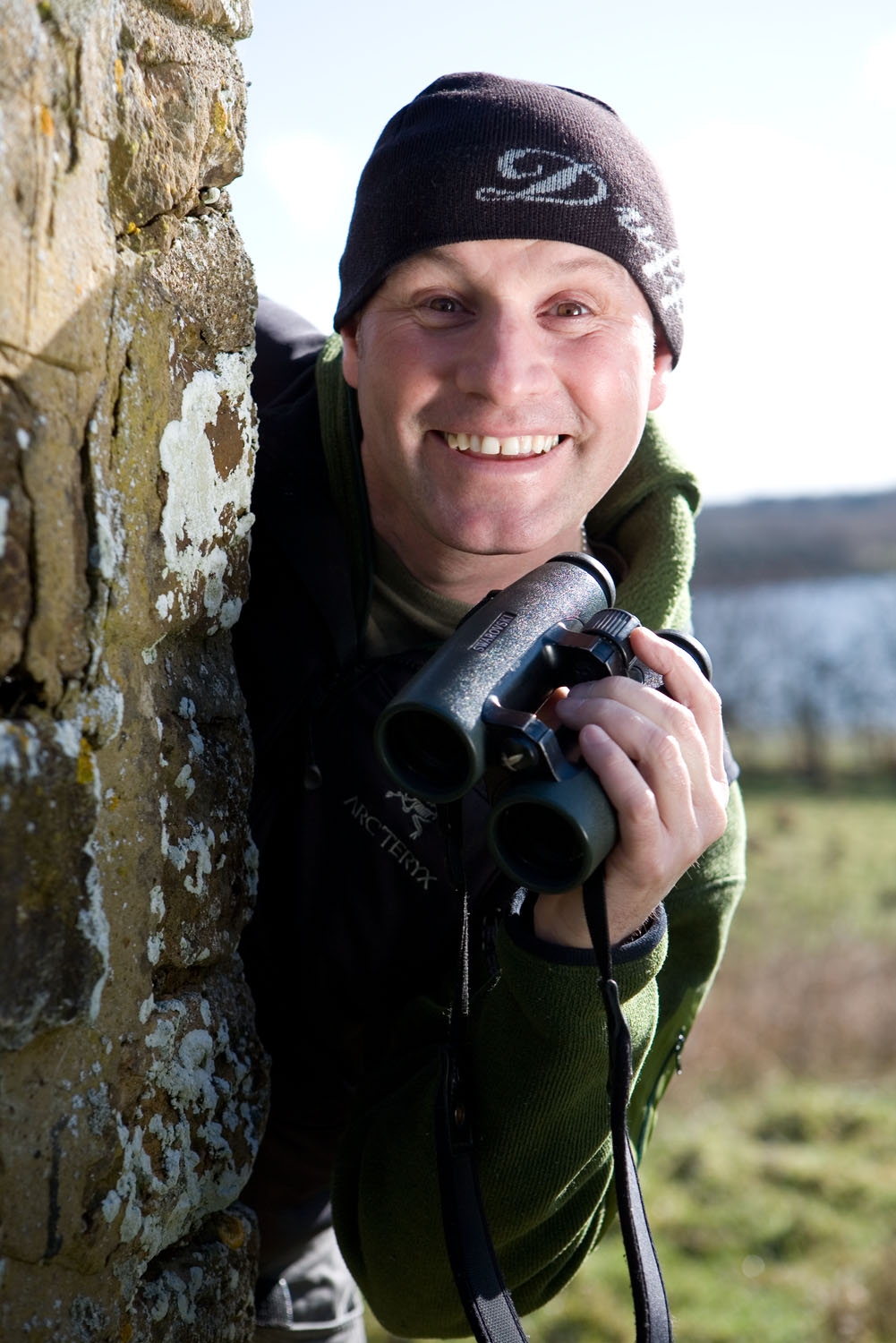Graceful, powerful, and built for life above the waves, this seabird is a master of the skies. Learn more about this impressive and enigmatic seabird.
What are albatrosses?
Albatrosses are stunning, long-lived seabirds belonging to the order Procellariiformes (or tubenoses), which also includes fulmars, petrels, and shearwaters.
- What is the world's heaviest flying bird? Meet the heavyweights that somehow get airborne
- 32 extraordinary bird facts: Discover incredible truths from the avian world, including a bird that likes to get drunk
What is the albatrosses' wingspan?
Some albatross species are exceedingly large, with the wandering albatross having the largest wingspan of any extant bird (3 metres!). They spend much of their lives entirely at sea, soaring thousands of kilometres in the pursuit of food, typically coming ashore only to breed.
- Discover the 10 biggest, heaviest birds in the world: Towering giants that don't always get airborne
- 5 giants of the sky – including one enormous bird that's as long as a car
How heavy are albatrosses?
Albatrosses weight close to 10kg.
How many species of albatross are there?
There are 22 species of albatross found across the world. The can divided into four genera, including: the great albatrosses (Diomedea), the North Pacific albatrosses (Phoebastria), the mollymawks (Thalassarche), and the sooty albatrosses (Phoebetria).
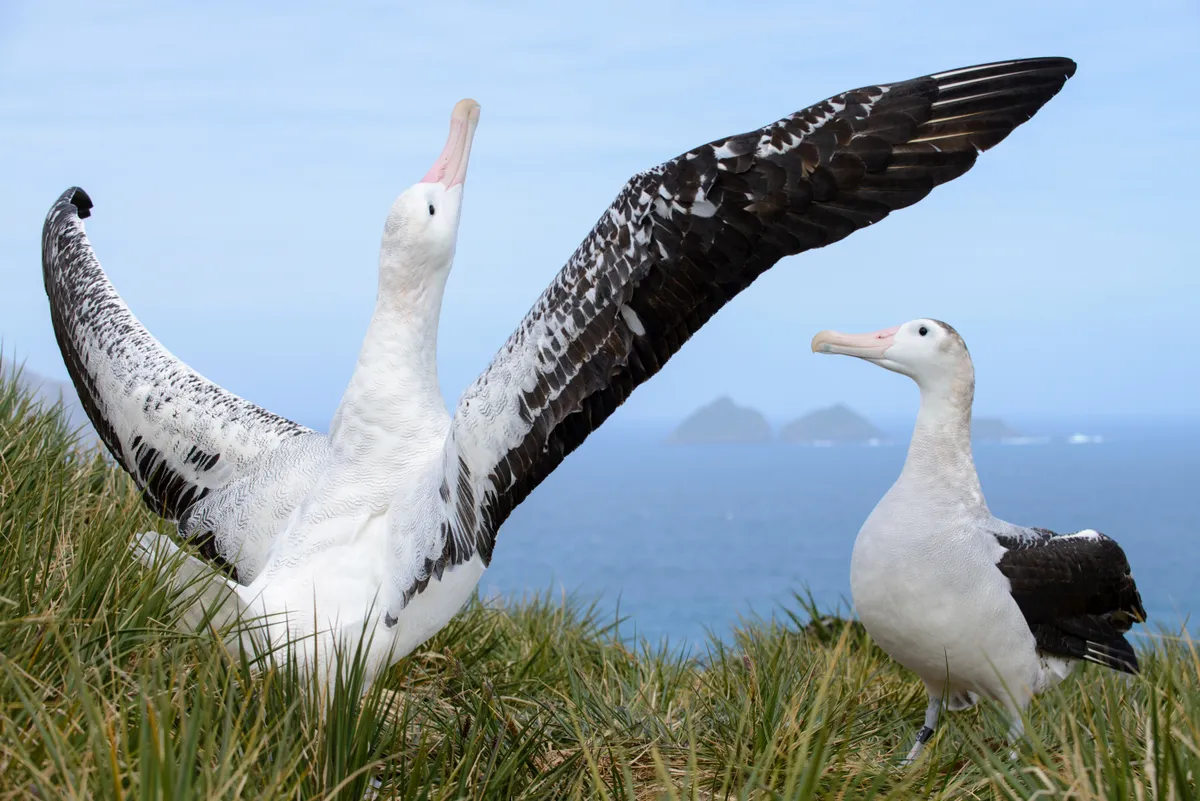
Where do albatrosses live?
Most albatross species range across the Southern Hemisphere from Antarctica to South America, southern Africa, and Australia and New Zealand. The four North Pacific albatrosses are an exception, three of which occur in the North Pacific from Hawaii to Japan, California, and Alaska. The Waved albatross breeds in the Galápagos Islands and feeds off the coast of South America.
How do we track albatrosses?
Our knowledge of the at-sea distribution and behaviour of albatrosses has been greatly enhanced by use of satellite telemetry. Given these birds can stay at sea for months at a time and travel across vast distances, attaching tracking devices to individual birds provides invaluable insight into where they feed and potentially interact with fishing vessels, thus guiding conservation action. You can see an example of how the movements of juvenile grey-headed albatross from South Georgia were tracked here.
What do albatrosses eat?
Albatrosses feed primarily on squid and small fish which they catch from the surface of the water, as well as the offal discarded from fishing vessels as they process their catch. They may also scavenge on floating animal carcasses.
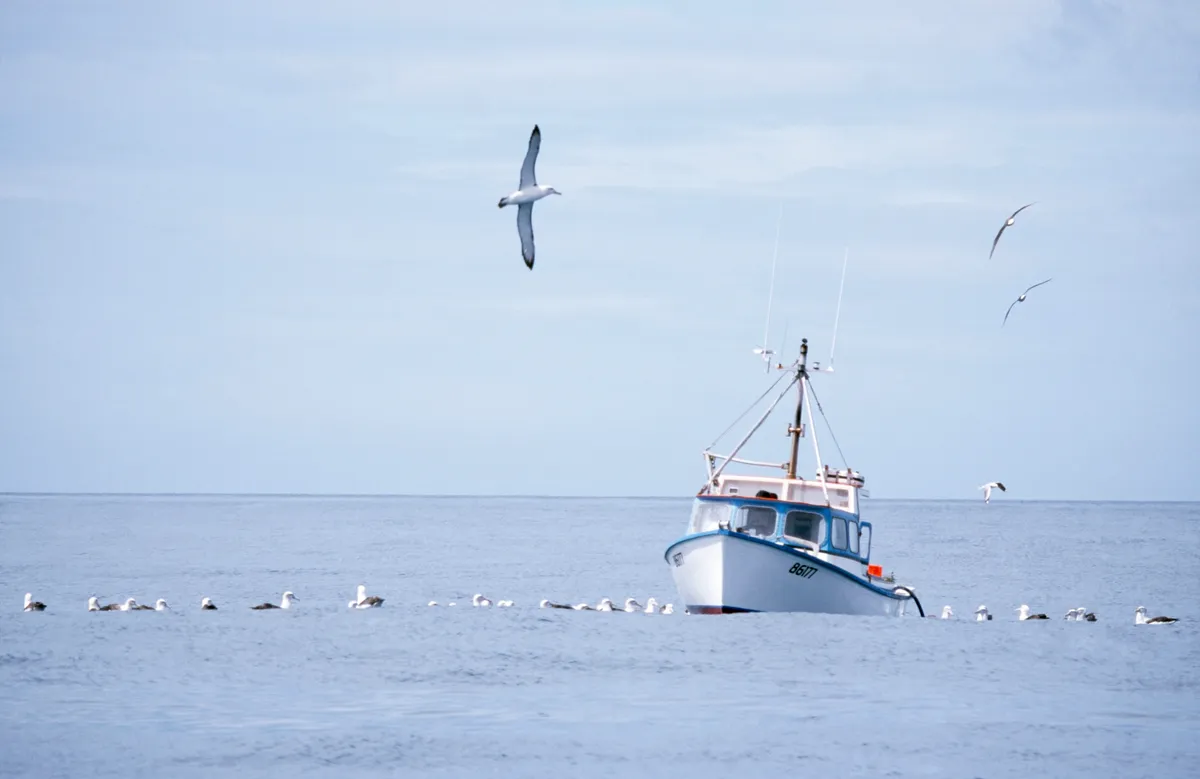
What are the main threats to albatrosses?
The albatross family, like many other seabird groups, are becoming increasingly threatened. In fact, they are the most threatened group of birds globally! According to the International Union for the Conservation of Nature (IUCN) Red List, 15 out of the 22 albatross species are considered at risk of extinction.
Their decline is closely linked to commercial longline and trawl fisheries operating in seabird feeding areas, combined with the impacts of invasive alien species and climate change.
Albatrosses are attracted close to fishing vessels by the smell of bait and discarded fish. This often results in them being accidentally captured on baited hooks and drowning or being fatally struck by trawl cables towing nets through the water. This is known as bycatch and is the biggest threat albatrosses face globally. It is estimated that 100,000 albatrosses are killed this way each year.
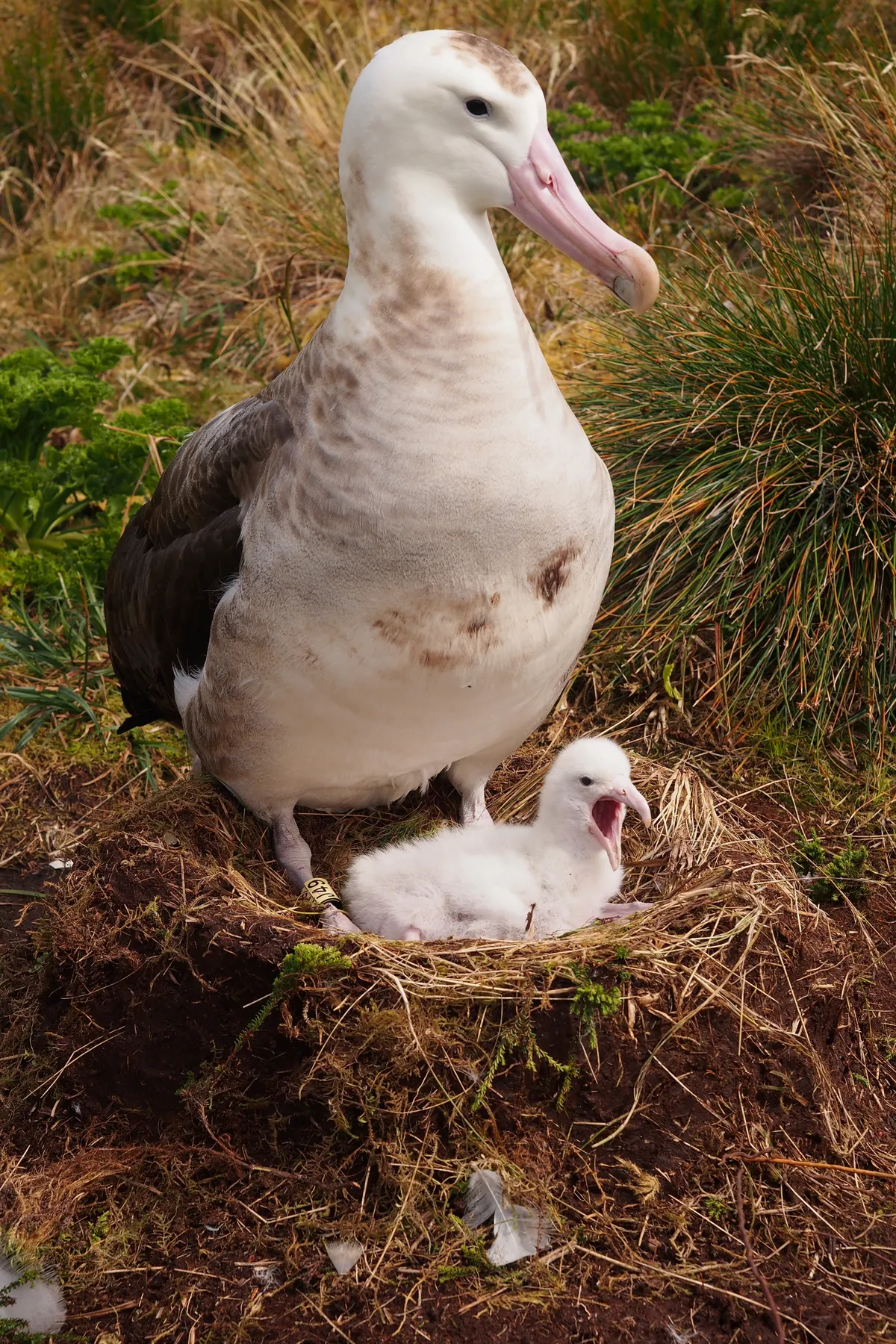
Predation by invasive alien species at breeding sites affects over 60% of albatross species. On Gough Island – a remote, uninhabited island in the Tristan da Cunha archipelago in the South Atlantic Ocean – more than 2 million seabird chicks, including those of the endemic Tristan albatross, die each year from wounds inflicted by introduced mice. The RSPB is working towards removing these impacts on Gough Island through a large and ambitious island restoration project.
How are the threats being addressed?
Since many albatross species have such vast ranges and encounter threats both at sea and ashore, their threats need to be addressed at multiple scales. The BirdLife International Marine Programme, an international conservation programme hosted by the RSPB, is dedicated to addressing global seabird declines using a combination of top-down and bottom-up approaches: influencing international policy is vital for securing conservation management for far-ranging seabirds – but equally important is working on practical solutions with fishers and others to find and implement the right management measures.
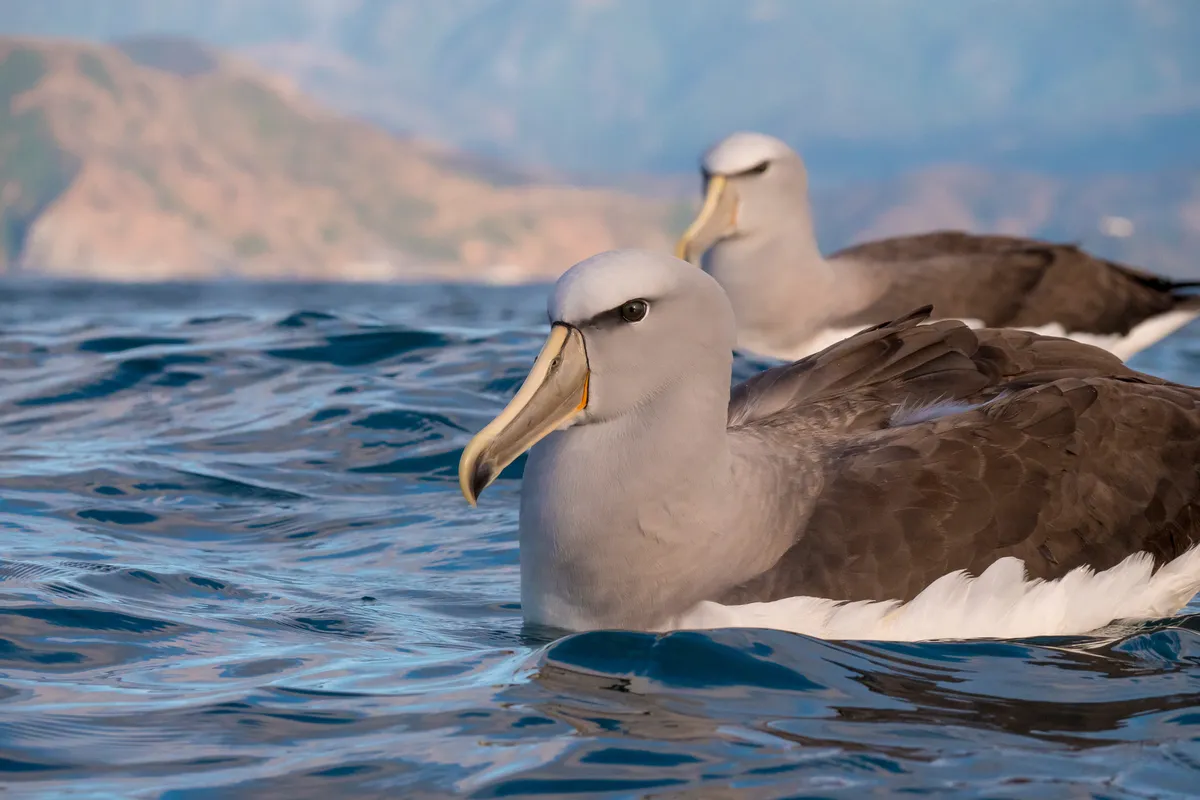
Simple and inexpensive activities, known as bycatch “mitigation measures” are highly effective in preventing these unintentional albatross deaths in trawl and longline fisheries. These include using bird-scaring lines to deter birds away from baited hooks and net cables, adding weights to branch lines, setting gear at night, and other innovative technologies.
BirdLife has secured commitments from the intergovernmental organisations which manage tuna stocks on the High Seas, called Regional Fisheries Management Organisations, or RFMOs, to require the fleets they manage to use bycatch mitigation measures when vessels are in areas which overlap with albatross.
What is the long-term outlook for albatrosses?
The outlook for endangered albatross species has improved, thanks to the success of conservation efforts. Through the work done by the ATF, the BirdLife International Marine Programme, and other partners, the tide is starting to turn for these remarkable birds. However, there is still much work to be done. Many fisheries fleets still don’t use seabird bycatch mitigation and mortality rates remain concerningly high. This is particularly the case in the High Seas where monitoring and compliance are difficult to implement. Remote Electronic Monitoring (REM) systems offer a potential solution, although the technology is not yet widely adopted.
For fisheries that already have already introduced regulations, the ATF is focussed on making sure they stick. This means training fisheries observers and inspectors to monitor compliance, refining the effectiveness of mitigation measures to suit the requirements of specific fleets, and ensuring seabird bycatch is as integral to fisheries management as keeping track of target fish stocks.
What does an albatross symbolise?
Long believed to be a symbol of good fortune, the albatross has its own annual world awareness day on 19th June. As legend would have it, the bird embodies the souls of sailors lost at sea, and to harm one was considered disastrous and likely to invoke the sea’s wrath. Nowhere is this better conveyed than in Samuel Taylor Coleridge’s poem The Rime of the Ancient Mariner. It chronicles the story of a mariner who shoots an albatross and is forced to wear the dead bird around his neck – as penance and to ward off any future misfortune at sea.
How do albatrosses mate?
Dancing is a part of their breeding ritual, the posturing and prancing includes sky-pointing, sky-calling, preening and rattling. A potential partner can go on for hours trying to entice a mate.
Pairs often mate for life. Established pairs only produce a single chick every two or three years. After the youngster leaves the nest, it will not return for between five and seven years, after which it too will be ready to start breeding.
What animals mate for life? Meet the most devoted couples in the animal kingdom
Why are wandering albatrosses so good at flying?
Taking off from land and water can be difficult and energetically expensive for albatrosses. But once they are airborne, ‘the hard yards’ are done, as they can then traverse huge expanses with a minimum of effort. This ‘dynamic soaring’ allows the birds to fly effortlessly and efficiently over the ocean with barely a wing flap, and has fascinated scientists for over a century.
Once airborne, albatrosses appear to ride a sidewinding rollercoaster, rarely going more than 15m above the ocean surface. Frequently flying across the prevailing winds, they are able to exploit differences in the rapidly changing wind velocity and direction (or wind shear) at varying heights above the water to sustain soaring flight. Here, their S-shaped manoeuvres consist of alternating upwind and downwind turns.
Each cycle is started both close to the ocean and in a wave trough, where wind velocity tends to be minimal. The albatrosses then climb diagonally upwind, and across the wind shear, to a height of around 10m. This is then followed by a turn of anywhere between 60 and 90 degrees, depending on the precise conditions, as they descend diagonally across the wind shear to repeat the process.
As the albatrosses cross between these slow and fast layers, airspeed is gained, which is crucially more than the slowing effect created by drag when the turns are executed. Additional gains are also made from exploiting the updraughts created by the movement of the ocean. This ‘wing-up’ is especially useful on light wind days.
What do albatrosses eat?
Their diet consists of squid, fish and krill – an extraordinary sense of smell helps lead them towards areas where food is in the highest concentration.
Do albatrosses sweat?
No, but all albatrosses possess a salt gland located above their nasal passages, which helps to excrete excess salt from their bodies. A high saline solution is produced, prior to being expelled from their nostrils, with the liquid sometimes causing a pinkish-yellow stain on the feathers of the birds’ necks.
